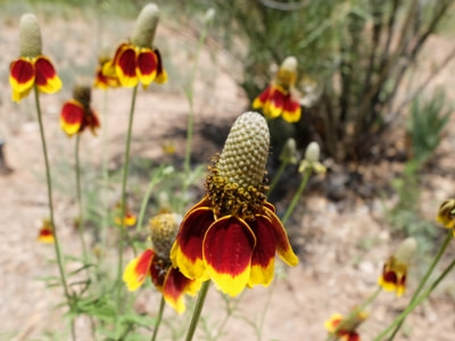 Found on dry slopes, by roadsides Seen blooming on June 30, 2018 by Hwy 554 Grows from 1 to 3 feet tall in a clump with narrow, deeply divided leaves. The flower-head is a purplish-green cylindrical cone up to 2½"' high skirted by drooping, usually yellow, sometimes reddish, petals. It is native but is grown as an ornamental so can escape back into the wild. A pleasant tasting tea is made from the leaves and flower head. The plant has medicinal properties that are pain-relieving and fever-reducing. A tea has been used to relieve the pain of headaches and to treat stomach aches and fevers. The Cheyenne made a tea from boiling plant parts as a wash to relieve pain and to treat poison ivy rash, and also as a wash to draw the poison out of rattlesnake bites. The Sicangu people in South Dakota used a tea of plant tops for headaches and stomachaches. The Acoma and Laguna Indians used crushed leaves rubbed on mothers' breast to wean a child. Source. If you want to identify a different flower then you might find it useful to check what was blooming this time last year. If you cannot identify a flower from the website send a photo and where you took it to [email protected]. Read online for tips.
0 Comments
Leave a Reply. |
AuthorI am Marilyn Phillips, a native of England, whose love of nature and the outdoors from childhood brought me by a circuitous route to Crested Butte, Colorado in 1993 and 16 years later to northern New Mexico. My exploration of the many trails in these areas, my interest in wildflowers and photography, and career in computer system design came together in this creation. If you have any corrections, comments or questions, please contact me by email. Archives
September 2025
Categoriescopyright © 2020
|


 RSS Feed
RSS Feed